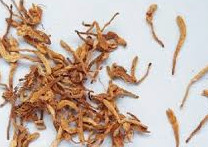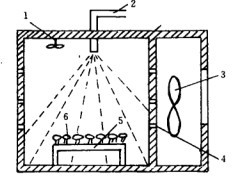Effects of Different Drying Methods on Browning-promoting Enzyme Activity and Active Components of Flos Lonicerae
ABSTRACT: Objective: To study the effects of different drying methods on the activity of enzyme and the content of related active ingredients in Flos Lonicerae, and to provide experimental basis for determining the best drying method and improving the quality of Flos Lonicerae.
METHODS: Samples of Lonicera japonica were dried by microwave drying equipment, constant temperature blast drying and shade drying. The activities of polyphenol oxidase and peroxidase and the contents of total phenols and flavonoids were determined by spectrophotometer. The contents of chlorogenic acid and luteolin were determined by high performance liquid chromatography.
RESULTS: Polyphenol oxidase and peroxidase activities were the lowest in the samples treated by vacuum microwave, and the residual enzyme activities were only 30% and 13% of the fresh samples, which resulted in slight browning, with the highest contents of total phenols, total flavonoids, chlorogenic acid and luteolin. Most of the enzyme activities in shade-dried samples remained, browning was serious and the content of active ingredients was the lowest.
CONCLUSION: Different drying methods have great influence on the activity and active ingredients of Lonicera japonica. Vacuum microwave drying is the best drying method.
Key words: Lonicera japonica microwave drying, drying method, enzyme activity, active ingredients

Lonicera japonica is Lonicera macranthoides, Lonicera glandularis, Lonicera chinensis or Lonicera fulva.
Dry buds or blossoms, harvested and dried before blooming in early summer. Lonicera japonica is an important raw material for drinks, which has the functions of clearing away heat, detoxification and cooling wind. The consumption of Lonicera japonica in the fields of medicine, health care and food is increasing year by year, and the market is in short supply.

In recent years, the main active ingredients of Lonicera japonica are flavonoids, organic acids, volatile oils, saponins, etc. Under the action of browning-related enzymes, browning easily occurs in the drying process. Different drying processes can also directly affect the appearance and quality of Lonicera japonica. The commonly used drying methods include shade drying, drying and microwave drying. The content of chlorogenic acid and luteolin is usually used as the evaluation index of drying and processing methods of Lonicera japonica.
The phenomenon of enzymatic browning in plants is mainly caused by quinone reaction under the catalysis of polyphenol oxidase and peroxidase, and then further polymerization to produce melanin. Browning-related enzymes are widely distributed in various organisms, causing browning, resulting in quality degradation, affecting nutritional components and utilization value.
Therefore, browning in the drying process has an important impact on the appearance of products and the content of active ingredients. However, the effects of different drying methods on enzymatic activity and content of active ingredients related to browning of Lonicera japonica have not been reported.
In this study, the effects of different drying methods on the activity and active ingredients of Lonicera japonica were studied by measuring the activity of enzyme and the content of total flavonoids, total phenols, chlorogenic acid and luteolin after different drying methods, so as to provide basis for selecting suitable drying methods, avoiding browning and loss of active ingredients in the drying process of Lonicera japonica and improving the quality of Lonicera japonica japonica.